#native seeds
Text
so I found this really cool website that sells native seeds- and you might be asking me "snekdood, haven't you posted an entire list of websites that sell native wildflower seeds that you're going to add on to soon?" and yes that's true, but that's not the kind of native seed im talking about rn.
see, on my quest to find websites that sell native wildflowers, I came across this dope ass website that sells seeds that have been farmed and harvested by ntv people traditionally, i'll let the website do the talking:




so anyways this is the coolest website ever. you can find the wild relatives of chiles on here called chiltepines, you can find different colors of corn and cool squash's, and every seed from whichever farm has it's own lil origin story written about it. you can also find other veggies here that are already commercially available to help fund and support this organization. as well as there being a cool gift shop with a lot of art made by different native folk from all around as well as cookbooks, jewelry, pottery, weavings, and clearly plenty more:

as well as a pantry?? with premade soup mixes??? and i really want to try them now??????
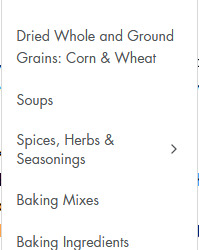
anyways I think its worth snoopin' around bc I'm almost positive you'll see something you think is cool (oh also if you happen to have some seeds passed down from ur family too and ur also native they seem like they would gladly help produce more)
#heirloom seeds#native plants#native wildflowers#native seeds#native seeds search#gardening#farming#seed conservation#heirloom vegetables#vegetables#crops#food#native american#native american traditions#native american heirloom seeds#support indigenous people#indigenous art
2K notes
·
View notes
Text

Made up the angry aro seeds packs I was dreaming of last year!! 💚🐝
This seed pack is made up for Valentines Day and for Aromantic Spectrum Awareness Week.
They are meant to call forward the vast networks of relationships we are in that reach far beyond the couple form and the nuclear family. An invitation to support and grow our relationships with pollinators, plants and land.
Plus, St Valentine was also the patron saint of beekeeping so I think it's a good excuse to make it! (Although this is targeted at supporting native pollinators of all varieties, not just bees and not honeybees)
It contains a mixture of plants native to my area (Coast Salish land) that are ok to plant in February and March. Most native plants do best when planted in the fall or early winter so these are extra special in that regard.
I'm dropping a few off at my local anarchist bookstore and some more are being given away at a valentines craft fair!
341 notes
·
View notes
Link
Overseeding is a long shortcut. Instead of removing existing grass before planting, you sow new seeds right over an area partially covered by vegetation. Gardeners often overseed to fill in patchy lawns with grass seeds, but you can use prairie grass and wildflowers to bring a more natural look to your backyard landscape. Prairie plants take several years to establish, but they ultimately can reduce lawn maintenance, encourage the presence of birds and other wildlife, and create a scene of beauty offering daily pleasure.
Overseed your yard in fall or early winter. Seeds exposed to winter weather generally germinate better.
Rough up the bare spots of your backyard with a spade or rake. The prairie grass and wildflower seeds do not root and grow unless they are in contact with bare soil.
Use a mix of seed that contains half prairie grasses and half native wildflowers, a total of 10 pounds of seed per acre. Mix in 10 pounds of sand or sawdust to make it easier to spread. Broadcast the seed mix by hand, spreading it very lightly until every bare area is seeded. Repeat the seeding process immediately so that each area is sown twice. Rake or tamp the seeds into the soil. Water well after planting.
Control weed growth by mowing the area whenever weeds are over 15 inches high. Cut all plants to a height of 6 inches the first season, a height of 12 inches the second. Do not mow while your flowers are blooming.
#garden#gardening#DIY garden#overseeding#solarpunk#solar punk#wildflowers#native grass lands#native plants#native seeds#native flowers
112 notes
·
View notes
Text
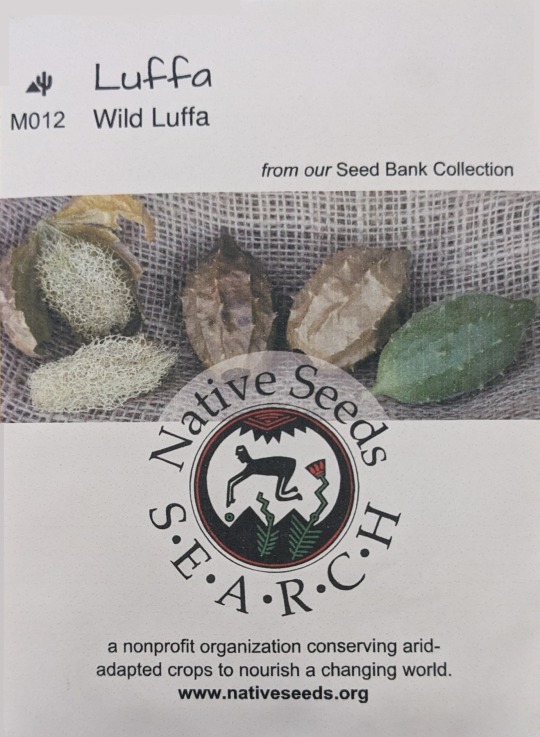
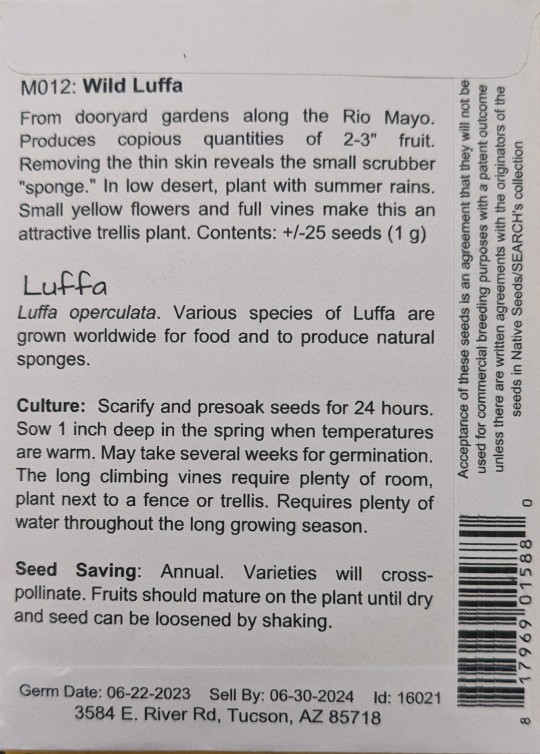
[ID: Two cropped photos, showing the front and back of a seed packet for "Wild Luffa".
The front has a round logo that reads, "Native Seeds Search" in the center, with a stylized drawing of a person running through a plain with the sun above.
The top of the seed packet reads: "M012, Luffa - Wild Luffa from our Seed Bank Collection.". Below the logo reads, "A nonprofit organization conserving arid-adapted crops to nourish a changing world." with the website address of www.nativeseeds.org.
The back of the seed packet has more information, reading:
"M012: Wild Luffa
From dooryard gardens along the Rio Mayo. Produces copius quantities of 2-3 inch fruit. Removing the thin skin reveals the small scrubber 'sponge'. In low desert, plant with summer rains. Small yellow flowers and full vines make this an attractive trellis plant. Contents: +/-25 seeds (1 g).
Luffa - Luffa operculata. Various species of Luffa are grown worldwide for food and to produce natural sponges.
Culture: Scarify and presoak seeds for 24 hours. Sow 1 inch deep in the spring when temperatures are warm. May take several weeks for germination. The long climbing vines require plenty of room, plant next to a fence or trellis. Required plenty of water throughout the long growing season.
Seed Saving: Annual. Varieties will cross-pollinate. Fruits should mature on the plant until dry and seed can be loosened by shaking."
The very bottom of the packet reads in smaller print: "Germ Date: 06-22-2023. Sell By: 06-30-2024/ ID: 16021. 3584 E. River Rd, Tuscon, AZ 85718/
Written sideways next to the barcode is text that reads, "Acceptance of these seeds is an agreement that they will not be used for commercial breeding purposes with a patent outcome unless there are written agreements with the originators of teh seeds in Native Seeds Search's collection".
End ID.]
Clickable link to the site: "www.nativeseeds.org"
5 notes
·
View notes
Photo

http://wildflowerid.info/seedgall.htm
Our new native seed gallery now has 700 entries - stay tuned, only 1/3 of what we have scanned to upload!
#natives#native#wildflower#wild flower#wild flowers#wildflowers#flower#flowers#seed#native seed#id#ids#wildflowerid#wildflower id#native wildflowers#seeds#native seeds
7 notes
·
View notes
Text
Hey y’all, if you’re a jewelry fan, the Native Seed Search website has dropped a jewelry update to help support their work: A Native American seed bank focused on the indigenous food of the American Southwest. Most of the jewelry for sale is silver and turquoise: a traditional art of the Diné (Navajo).
A selection of things for sale at the time of this post:
This sick gecko pin

These gorgeous dangle earrings
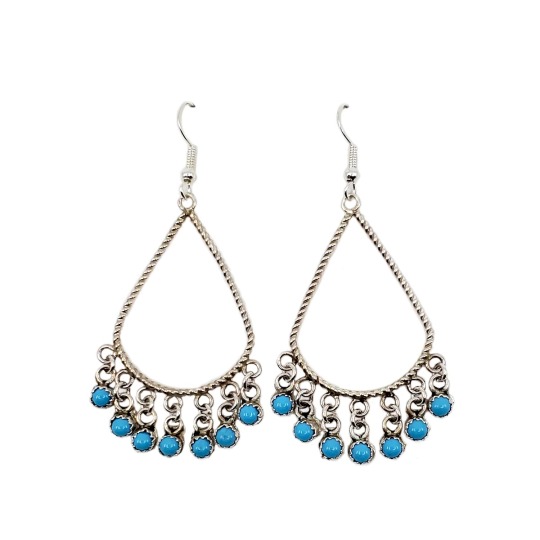
And these delicate feather earrings

Plus much more! I know none of us on this site have any money, but if you find any down the back of the couch, this is a great cause and some gorgeous wearable art.
(If you need international shipping, I would inquire with them directly, since I think their assumption is that most sales would be domestic.)
#indigenous art#native american#native american art#seed bank#conservation#biodiversity#sustainability#rocky rambles
1K notes
·
View notes
Text
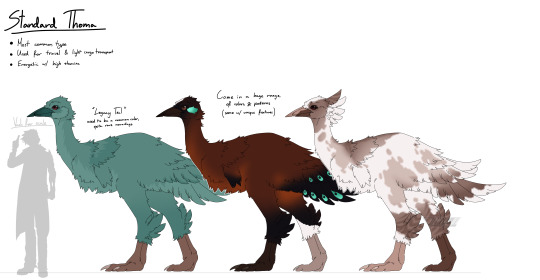
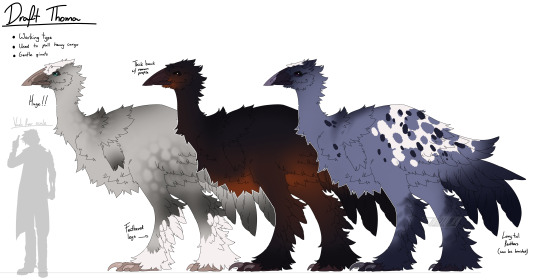

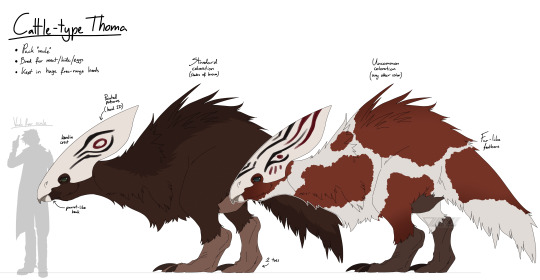
cowboy au worldbuilding with the thoma
as you can see im taking some creative liberties with the giant emu by making them more diverse bc canon isnt enough for me and i have the brainworms
extra notes below the cut
standard thoma:
the original thoma and most common type available
perfect for travel, can pull wagons or carry light cargo
fast with good stamina, fastest over short distances
friendly, intelligent, energetic and quick to learn
the most diverse in terms of colors, patterns and extra traits
well rounded in all departments (theyre like the AQ horses of trigun)
draft thoma:
uncommon outside of major cities (kept by specialized breeders)
used for construction work and long haul heavy cargo transport
gentle, patient and eager to work
not built for speed but can walk for days at a steady pace without rest
dense feather coat protects them from the heat and sand
expensive to maintain and keep due to their size
theyre a relatively new type that came from selective breeding
"wild" thoma:
actually feral (aka. previously domesticated), not wild
originating from lost/runaways that have not been in contact with humans for generations
rare and elusive with a small population, sometimes spotted living near shipwrecks
people will pay top $$ for their capture
begin to exhibit adaptive mutations that help them survive the wastelands
smaller and less fluffy than their standard counterparts
dont come in many colors, mostly bays, chestnuts and blacks
hardy with incredible endurance
very stubborn, temperamental and intelligent, cant be forced to do something they dont want (like donkeys)
rarely ridden, mostly kept for crossbreeding
cattle-type thoma:
related to the standard thoma but NOT the same species
common pack animal in caravans, sometimes ridden as a cheaper alternative to the standard thoma
mainly bred for meat, hide and eggs
kept in huge open range herds that travel along worm swarms for feeding
sometimes kept as a form for anti-worm pest control
keratin crests are lightweight and used for protection and display
ranchers will paint patterns on their crests as a form of identification
not the sharpest tools in the shed, tend to bite and trample people
#trigun#trigun stampede#cowboy au#worldbuilding#andr0art#i like speculative biology idk what to tell you#its the brainworms#sorry for the horrible handwriting btw#also ik that significant adaptive mutations take longer to appear than a 100 years#but lets say they adapt fast due to genetic modification#the implications of what seeds did after the fall to adapt to the wastelands fascinates me#since thoma arent native to no mans land iirc#did they just have them on board?#what ab other animals?#what kind of non-native wildlife is there#i know there are birds and like... a cat#<- still hasnt read trimax#everything i know has been obtained via tristamp and osmosis#also yes im bringing in the og thoma#diversity win!#i needed a substitute for cows so vash and wolfwood have something to herd for cash#living the cowboy dream baby!
500 notes
·
View notes
Text
Yo, but literally a lot of plants look like pot.
#Maybe that’s why I couldn’t find the seeds for the native one#I would honestly think that would be a selling point
102 notes
·
View notes
Text
hey if ur in the midwest or more specifically missouri here’s some websites i’ve found helpful for finding native seeds and live plants (they’re not all in missouri or the midwest specifically but have some seeds from around here too bc truly human made borders are fake and plants go wherever they want so):
wildseedproject.net
mowildflowers (this websites cool bc they’ll deliver live plants to you if you live nearby enough and they also go to different places around missouri all year to sell plants at festivals or events or whatnot)
nativewildflowers.net
swallowtailgardenseeds.com
strictlymedicinalseeds.com
toadshade.com
treeseeds.com
ouriquesfarm.com
putnamhillnursury.com
sugarcreekgardens.com
prairiemoon.com
seedvilleusa.com (also on etsy)
mybutterflylady on etsy
everwilde.com
and if u ever need help or info or whatever about plants or even find a place to exchange plants and buy some on a forum check out dave’s garden
if anyone knows any other websites and wants to add them on i’d totally appreciate that c: !
(i will update this with more websites too if i come across any)
#seeds#native seeds#native plants#native plant gardening#native gardening#pollinator garden#native garden#wildflowers#native wildflowers#wildflower garden#gardening#wildflower gardening#missouri native plants#missouri#midwest native plants#midwest plants#not all of them are native seed focused but they do have places you can find them#and if you're looking for specific seeds id check out some of these maybe#ourique's farm is more based south east but i got some trumpet vine seeds from there so :0 yaknow#its what im saying... borders are fake and plants arent about to start respecting them
225 notes
·
View notes
Note
Saw ur post on insta about milkweed. Are you telling me that I’ve been manually separating my seeds from the fluff for years and am only just now learning this trick?!?!!!!???
Mind = blown, thank you so much for sharing
Happy to assist.
For those who haven't seen it:
219 notes
·
View notes
Text
Today I planted cardinal flower, swamp milkweed, and Canadian milk vetch at the bottom next to a creek. I hope they get enough sun, I had to plant them pretty close to the trees to protect them from the lawnmowers.
#I live next to a golf course right now so there’s very few spaces that aren’t perfectly manicured#I tossed around like 50 cardinal flower seeds directly onto mud surely one of them will grow#I didn’t know those fuckers were so tiny#guerilla gardening#solarpunk#for my next stunt I’m sneaking native asters into a garden bed wish me luck
69 notes
·
View notes
Note
I have a follow up question from your seed bombing post, how do you go about finding the seeds? My friend asked I help her seed bomb the abandoned lot behind her house in CO and I know a lot of the native species that would do good there but she's had little luck finding any of these at stores near her. Where I live, I have been able to source seeds from my old college or garding stores have had them but she doesn't have those same connections and stores there dont seem to carry most native species. Any tips?
When you grow your own plants, they will give you a WEALTH of seeds. I impulse ordered swamp milkweed (young plant in pot) from a native plant nursery early in 2022 and it not only flourished and raised monarchs, but gave me hundreds and hundreds of seeds.
In late fall and early winter, also, many plants are going to seed, so you can just...gather from the side of the road basically. Where I live, goldenrods, asters, and ironweed still have seeds hanging onto them.



I got a lot of my seeds by collecting at the nature center where I volunteer, especially in their prairie area
409 notes
·
View notes
Text
applying for a volunteer position at a native plant conservation organization!!
*crosses fingers* ʕ •`ᴥ•´ʔو ♡
#leafie speaks#personal#I wanna plant stuff let me innn!!!#if they don't I'll just start chucking seed bombs everywhere and plant native plants on my own like the little plant punk I am lmao
61 notes
·
View notes
Text

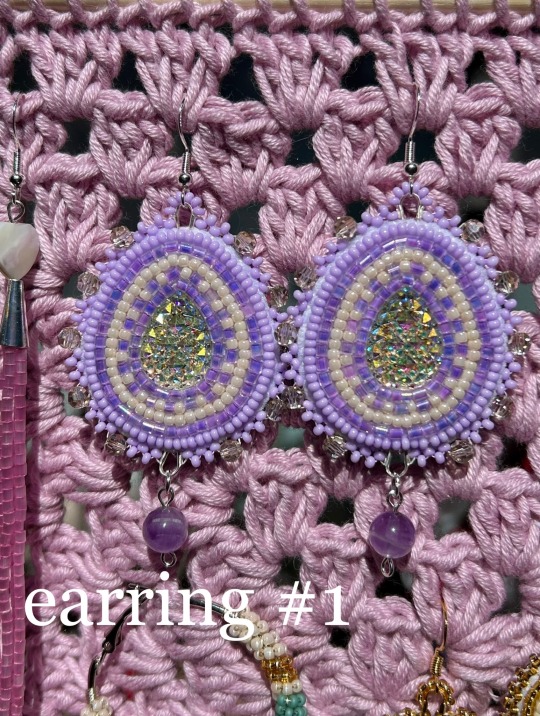
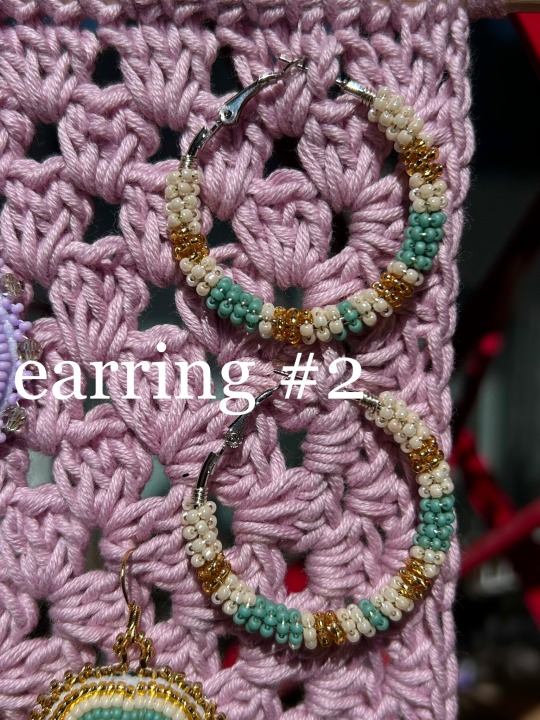
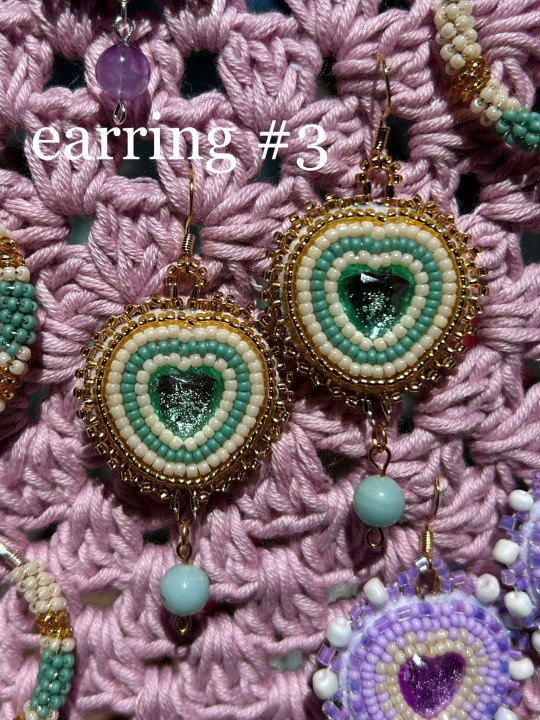

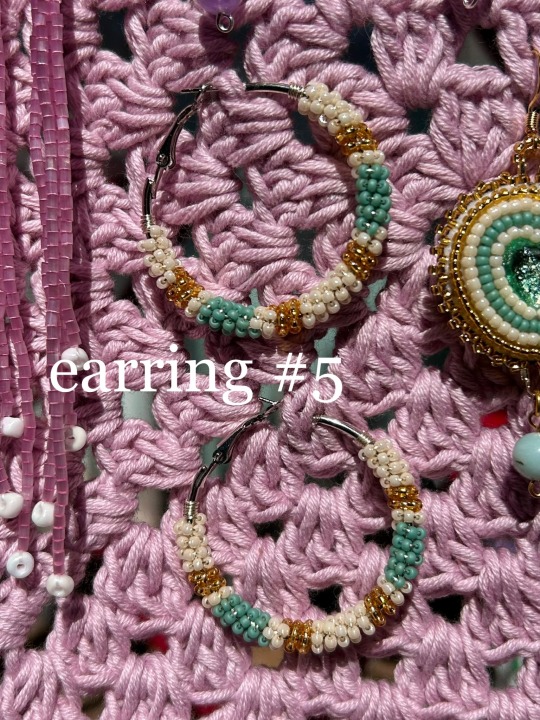
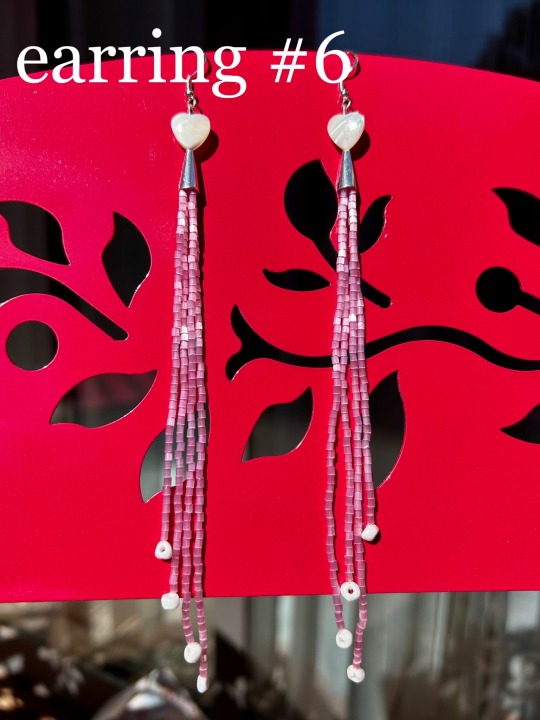
hi friends, i have more earrings for sale !!! u can message here of on my instagram (@galvquodi) to buy, i’d appreciate shares if ur unable to purchase - all $$ going to rent bc it’s ridiculously expensive to live in santa fe <3 info below the cut!
earring 1: claimed
earring 2: claimed
earring 3: claimed
earring 4: claimed
earring 5: claimed
earring 6: claimed
us shipping is 6, can is 16, message about anywhere else. tips are greatly appreciated <3 mvto!
#beadwork#beaded earrings#beaded jewelry#queer artist#jewelry#seed bead jewelry#handmade earrings#handmade jewelry#indigenous made#indigenous art#indigenous#native art#native#slow fashion#cherokee#cherokee made#mvskoke#mvskoke made
128 notes
·
View notes
Text


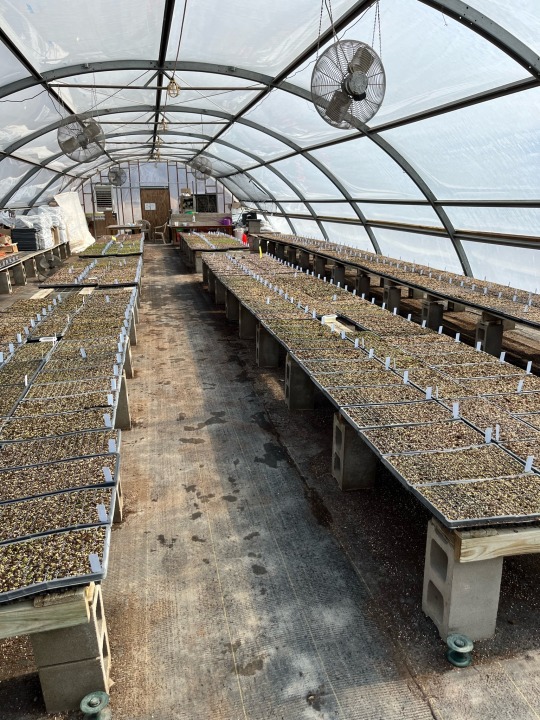
All the babies. Of the ~550 trays here, I personally seeded about 240 of them. Only the very early stuff is coming up, mostly the alliums and violets. Every single one of these was seeded by hand from seeds we stratified (unless they don’t require stratification). There are 70,040 cells in here and our germination rate is very high, we usually have just as many finished plants as there are cells started. So around 70,000 native plants will be sold to the public and some local government programs but they’ll all get planted somewhere. 70,000 more links in the chain for the ecosystem. 70,000 more chances a pollinator finds the plant they need to survive. 70,000 more root systems anchoring degraded soils. 70,000 more reminders that the earth is home for all of us, including those who cannot speak and are easily ignored.
This is the 5th season my boss has grown native plants for sale at this scale. So there may be as many as 350,000 plants out there that he ushered along into existence. To do all this work, stratifying and hand seeding, takes about two weeks (not including the 90 days the seeds just sit in the fridge). It’s not impossible, there’s very little mystery, once you find your rhythm it’s all very doable. You take the time to tediously tweezer a little gooey clump of seeds into a seedling cell 128 times and that’s one tray. You do that for 20 trays, that takes about 5 hours. You go to lunch. Repeat for two weeks. Your coworkers come in after you and do the same thing. Three people make enough plants to cover about 1.5 acres of land. It’s not changing the world but it is changing my town.
#native plants#nature#plants#gardening#greenhouse content#seeds#seed starting#spring#north america#great plains
51 notes
·
View notes
